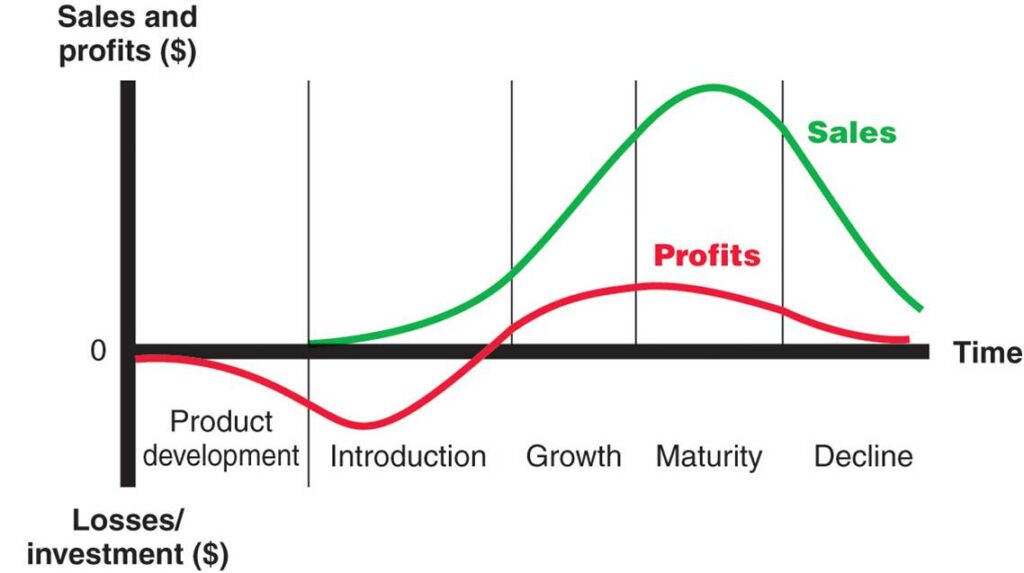
Product lifecycles are the integral procedures in terms of the PPC management service. Many users haven’t been aware of the importance of the appropriate product lifecycles, which can affect the overall strategy of the PPC. The method for developing product for customers and generating strategy for sponsored ads budgets, Time management and idea generation for new products.

Phase of launch
The launching phase of the products in the Amazon marketplace is the first and foremost deployment which can make or break the sales of the listing. It is a great opportunity for sellers to promote and spread the word about their new listing.
The product launch on Amazon is reliant on paid advertising to reach a huge audience. Otherwise, it will be difficult to climb the search results and establish a constant flow of sales from the right keywords.
The successful product’s first deployment can depend on other external tools like external paid ad services, deal sites, affiliate sites, social media, and so on.
The relevance of the advertisement
It is true that advertising in the Amazon marketplace plays such a huge role in every product launch. One would not want to exclude the advertising from the Amazon efforts. The metrics associated with the advertising have also affected the way Amazon’s algorithms react to your products.
The most ideal to run the ads for your products is when you have the ready-inventory in your store.
It is also important to build a good base first for your products. When you have passed a certain review number, you can proceed to spend money on ads. Otherwise, your ads might not be tempting to the curious audience. It is indeed true that the products which already have good reviews are more convincing than the products with zero or few reviews.
The ads can provide exposure to a wider audience. Therefore, you will want to make sure that your product page or store is tempting enough for your audience.
In this cycle, it is important to focus on the ads that work to boost the products’ exposure. You will also want to get rid of the ads that won’t take your product anywhere.
Maintaining the cycle
Presuming that the products have been going live on the Amazon marketplace, you must have details and analytics on particular pages. You will need to understand the metrics that you’ve attained through the particular ads. Consider equipping yourself more with knowledge of Amazon ad metrics.
Each product you list on Amazon should have targeted keywords. Through these pages, you will know the better metrics which can lead to better conversions. The ad impressions won’t mean anything if you are not doing good with the click through rate. Obviously, your buyers will need to click your product first before purchasing it.
The most important signal to consider is the click through rate.
The profiting phase
The final stage of the product lifecycle on Amazon is the profiting phase. A product at this stage has been sitting in a particular online marketplace for months. In this case, the products have steady sales and healthy reviews.
There’s a good reason why this particular listing is thriving. It is because the sellers have input the right keywords and description in it.
This phase is much better than Retail Ready. Positive reviews from previous customers are solid proof of the product’s success. The primary focus in this phase is to earn revenue from the ads generated.
In this stage, you could turn the Amazon ad into the sales directions into the profits. With the enormous amount of profits, it makes the business possible to reinvest in the inventory and other sections in the business operation.

We identify high-traffic keywords and adjust our bids accordingly during this step.
We run our own branded searches and Amazon-sponsored brand ads with customized ad text in addition to long-term keyword research campaigns.
The ACoS percentage is the most important metric, but we must also keep track of our average cost per click and TACoS conversion rate (Target ACoS).
Our ACoS percentage outcomes must be optimized and properly analyzed in conjunction with the sales price.
But there are a few things to keep in mind. By removing offers and total prices, you can obtain a good ACoS for a product family.
You can make money by driving fewer total ad sales. This is a common problem in our reports.
In some highly competitive markets, simple mathematical facts cannot generate a profit.Assume a conversion rate of 12% and a profit margin of 40% ($23).
If the ACPC is $4.50, they will be able to compete with the top ad investments and obtain a profit. Advertising can be profitable with a sensitive ACPC of around $1.
A 50% ad conversion rate is required to make a profit at this level. In such cases, you must pick your battles wisely and think about how to make the most of a limited advertising budget.
Declining phase
Sales and earnings begin to decline. A successful marketing campaign can assist a company in selling to “laggards” and moving on to the next project.
Is the market getting better? Margin dilution? Is it a product? This indicates that your product is nearing the end of its life cycle.
Who is left behind? Examine your late adopters (or prospective buyers) (or potential buyers). An existing demographic can be broadened.
Low-cost marketing strategies An examination of the most expensive marketing channels aids in the development of future promotions.
Let’s take a look at iPhone sales as an example.
Profit is spent on brand capital. Because iPhone sales are declining, Apple stopped publishing unit sales in 2018. They continue to gain units.
Apple is “milking the brand” by charging customers to compensate for a drop in iPhone sales due to market saturation:
Apple stopped publishing after the iPhone’s sales plummeted.
How can marketing expenses be reduced? Reduce marketing expenses during the decline phase. Less marketing results in fewer sales and profits. Inaction in marketing reduces the likelihood of decline.
When is it going to be harvested? Harvesting lowers overall profitability. Harvesting eliminates the need for product development and marketing.
If you don’t know when a company will stop selling a product, you could end up wasting thousands of dollars on leads who never receive a drip campaign or a follow-up contact.







